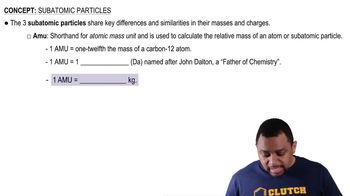How many protons and electrons are there in a neutral atom of each of the following elements?
a. argon
 Verified step by step guidance
Verified step by step guidance Verified video answer for a similar problem:
Verified video answer for a similar problem:



 1:25m
1:25mMaster Subatomic Particles (Simplified) Concept 1 with a bite sized video explanation from Jules
Start learning